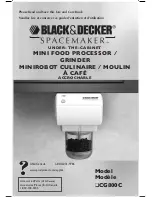
www.ti.com
EM_D[31:16]/UHPI_HA[15:0]
UHPI_HCNTL[1:0]
UHPI_HD[15:0]
UHPI_HD[16]/HHWIL
UHPI_HD[31:17]
UHPI_HAS
(B)
UHPI_HBE[3:0]
UHPI_HRW
UHPI_HDS[2]
UHPI_HDS[1]
UHPI_HCS
UHPI_HRDY
AMUTE2/HINT
A[x:y]
(A)
D[15:0]
D[16]
BE[3:0]
(C)
R/W
WE
(D)
RD
(D)
CS
RDY
INTERRUPT
DSP
External Host MCU
D[31:17]
A[17:2]
TMS320C6727, TMS320C6726, TMS320C6722
Floating-Point Digital Signal Processors
SPRS268E – MAY 2005 – REVISED JANUARY 2007
Figure 4-17
illustrates the Non-Multiplexed Host Address/Data Fullword mode of the UHPI. In this mode,
the UHPI behaves almost like an asynchronous SRAM except it asserts the UHPI_HRDY signal. This
mode allows the host to randomly access a 64K-byte page in the C672x address space. The upper 32 bits
of the C672x address are set by the DSP (only) through the CFGHPIAMSB and CFGHPIAUMB registers
(see
Table 4-13
and
Table 4-14
).
A.
Two host address lines or host GPIO if address lines are not available.
B.
Not used in this mode.
C.
Byte Enables (active during reads and writes). Some processors support a byte-enable mode on their write enable
pins.
D.
Only required if needed for strobe timing. Not required if CS meets strobe timing requirements.
Figure 4-17. UHPI Non-Multiplexed Host Address/Data Fullword Mode
CAUTION
The EMIF data bus and UHPI HA inputs share the EM_D[31:16]/UHPI_HA[15:0] pins.
When using Non-Multiplexed mode, make sure the EMIF does not drive EM_D[31:16];
otherwise, a drive conflict with the external host MCU may result. Normally, the EMIF
will begin to drive the EM_D[31:16] lines immediately after it completes the SDRAM
initialization sequence, which occurs automatically after RESET is released. To avoid
a drive conflict then, the boot software must set CFGHPI.NMUX to '1' before the EMIF
drives EM_D[31:16]. Setting CFGHPI.NMUX to '1' forces these pins to be input pins.
58
Peripheral and Electrical Specifications
Submit Documentation Feedback
















































